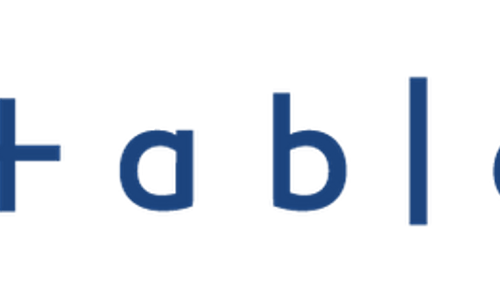The reason ETL is such a critical part of modern data management is that it allows all your data to be analyzed in one destination source. Any tool that makes organizing and understanding that data more efficient is the key to boosted profits. Tableau Prep is a Business Intelligence (BI) and data analysis tool designed to monitor and manage data flows across the business. Tableau ETL tools also have a dataflow builder for effective pipelines. We take a good look at how Tableau stacks up against other ETL tools on the market right now.
What is Tableau Prep?
Tableau Prep is a “No Code” data wrangling system that boasts an ability to “combine, shape and clean your data for analysis.” It’s split into two programs: Tableau Prep Builder, which allows you to create data flows, and Tableau Prep Conductor, which is more about scheduling jobs and managing that data flow.
How Does Tableau Prep Work?
Tableau ETL has a visual interface that can show the whole data preparation process at once or just select items. Tableau offers real-time editing, meaning that editing a piece of data within Tableau will immediately update the data within your data warehouse. Tableau connects to as many data sources as the user cares to input, transforms data as necessary, then loads it into a preselected destination, such as Redshift or Google BigQuery.
Tableau ETL is a very visual tool, allowing users involved in data preparation to create effective data pipelines, whilst producing understandable analysis and reports for executives.
What Can Tableau Connect To?
Like most modern ETL tools, Tableau can connect to a wide range of data sources and destinations. These include, but are not limited to:
- Amazon Athena
- OneDrive
- IBM DB2
- MongoDB
- Salesforce
- Kyvos
- Snowflake
- Non-sequential data such as PDFs and text files
Tableau uses fuzzy clustering, a machine learning method that allows data from text files and similar to be combed for relevant keywords, phrases, names, or other pertinent information. This allows users to gain analysis from all types of data, something which was extremely difficult before the advent of intelligent ETL.
Limitations of Tableau Prep
Although Tableau is an impressive BI and data analysis tool, there are many reasons why businesses ultimately choose another ETL tool to manage their data.
Tableau Technical Issues
Tableau is a beautiful data visualization system with a lot of labor going on under all those gorgeous graphs and charts. However, the system isn’t always as slick as you would hope. Numerous issues crop up, and although Tableau is great at reporting these to users, at times there are upwards of 80 individual Tableau software issues reported. Some of these take months to resolve.
Embedding Issues
Tableau claims that it’s easily embedded into any existing IT landscape. The reality is that this embedding can end up being clunky, with conflicts and technical issues arising.
Tableau After Sales Support Lacking
Tableau doesn’t have the best after-sales support. IT or performance issues are logged as “known issues” or the user is advised to purchase an additional feature, thus increasing the overall cost of the product. In independent reviews, Tableau regularly scores lower than Integrate.io in the customer support category.
Data Wrangling with Tableau vs Integrate.io
Both data management systems are considered easy to learn and use. However, users tend to agree that Tableau falls down a little on some of the more complex data wrangling issues, particularly where companies have no-SQL databases that need converting into tabular formats. Integrate.io has also been lauded for being suitable for even smaller businesses, whilst Tableau can be seen as too expensive for anything but medium to large enterprises.
In independent reviews, Tableau consistently scores lower than Integrate.io, although neither data wrangling service has scores to be ashamed of. What stands out is that Integrate.io has many more reviews than Tableau Prep and never scores lower than 3 stars, with the vast majority of reviews marked as 5 out of 5 stars. Tableau has received a number of 1-star reviews, along with comments like: “The interface is clunky” and “…manipulations don’t work as expected.”
Tableau vs Other ETL Tools
How does Tableau measure up against other ETL tools that are on the market right now?
Fivetran
Like Tableau, Fivetran supports a range of data connections and promises a minimum of maintenance once effective data pipelines are set up. Fivetran users find it simple to use and set up, but for any issues, support is minimal and online only. When things do go wrong, it can be very difficult to establish where the fault lies.
Matillion
Matillion is a data transformation tool built with cloud-based data warehouses in mind. Matillion offers a range of data collection and data analysis features but is generally considered more useful for mid-size or small enterprises. Larger enterprises and those wanting to integrate their own code will find some limitations and updates occur without the support team informing users what has changed.
Talend
Talend Data Integration manages millions of records at one time and is particularly useful for companies that rely on their Customer Relationship Management (CRM) software for insights. Talend is highly customizable but faces some synchronization issues. Some businesses found that Tableau had more useful connections to data sources than Talend.
Integrate.io and ETL
Data wrangling vs ETL – is there a difference? Yes, in the sense that ETL is data wrangling made simple. If you’re looking for an effective yet simple ETL solution for your business, Integrate.io offers a range of features and benefits which work for companies of all sizes. You can schedule your jobs, carefully monitor the progress of existing jobs, and see with the click of a button exactly which records have been updated in your destination data warehouse.
Want to know more? Schedule a conversation with one of our knowledgeable team who’ll be happy to answer any ETL questions you might have.










